Introduction to Cultured Marble Countertops
Cultured marble countertops are a popular choice in modern homes due to their affordability, durability, and aesthetic appeal. They are made by blending crushed limestone with resin, which is then molded and polished to resemble natural marble. These countertops offer a luxurious look without the high cost and maintenance requirements of real marble, making them an attractive option for both bathrooms and kitchens.
Over time, however, cultured marble countertops can become dull, scratched, or stained, necessitating restoration to return them to their original luster. Restoring cultured marble is a multi-step process that involves cleaning, repairing, polishing, and sealing. By understanding the properties of cultured marble and the methods used to restore it, homeowners can effectively maintain the beauty and functionality of their countertops.
Understanding Cultured Marble
Cultured marble is a man-made material that combines natural stone with synthetic resins. The manufacturing process involves mixing crushed marble or limestone with polyester resins, pigments, and other additives. This mixture is poured into molds to create countertops, sinks, and other fixtures. Once the material has cured, it is removed from the molds and polished to achieve a high-gloss finish.
The primary advantage of cultured marble is its versatility. It can be molded into various shapes and sizes, allowing for seamless integration into any space. Additionally, it can be produced in a wide range of colors and patterns, mimicking the look of natural marble or other stones. This makes it an excellent choice for homeowners seeking a custom look without the expense of quarried stone.
Despite its many benefits, cultured marble is not as hard as natural marble, making it more susceptible to scratches and wear over time. It also has a gel-coat surface that can become dull or discolored if not properly maintained. Regular cleaning and occasional restoration are necessary to keep cultured marble looking its best.
Another important aspect to consider is that cultured marble is non-porous, which means it is resistant to staining and bacterial growth. However, the surface can still be damaged by harsh chemicals, abrasive cleaners, and excessive heat. Proper care and maintenance are essential to preserving the integrity and appearance of cultured marble countertops.
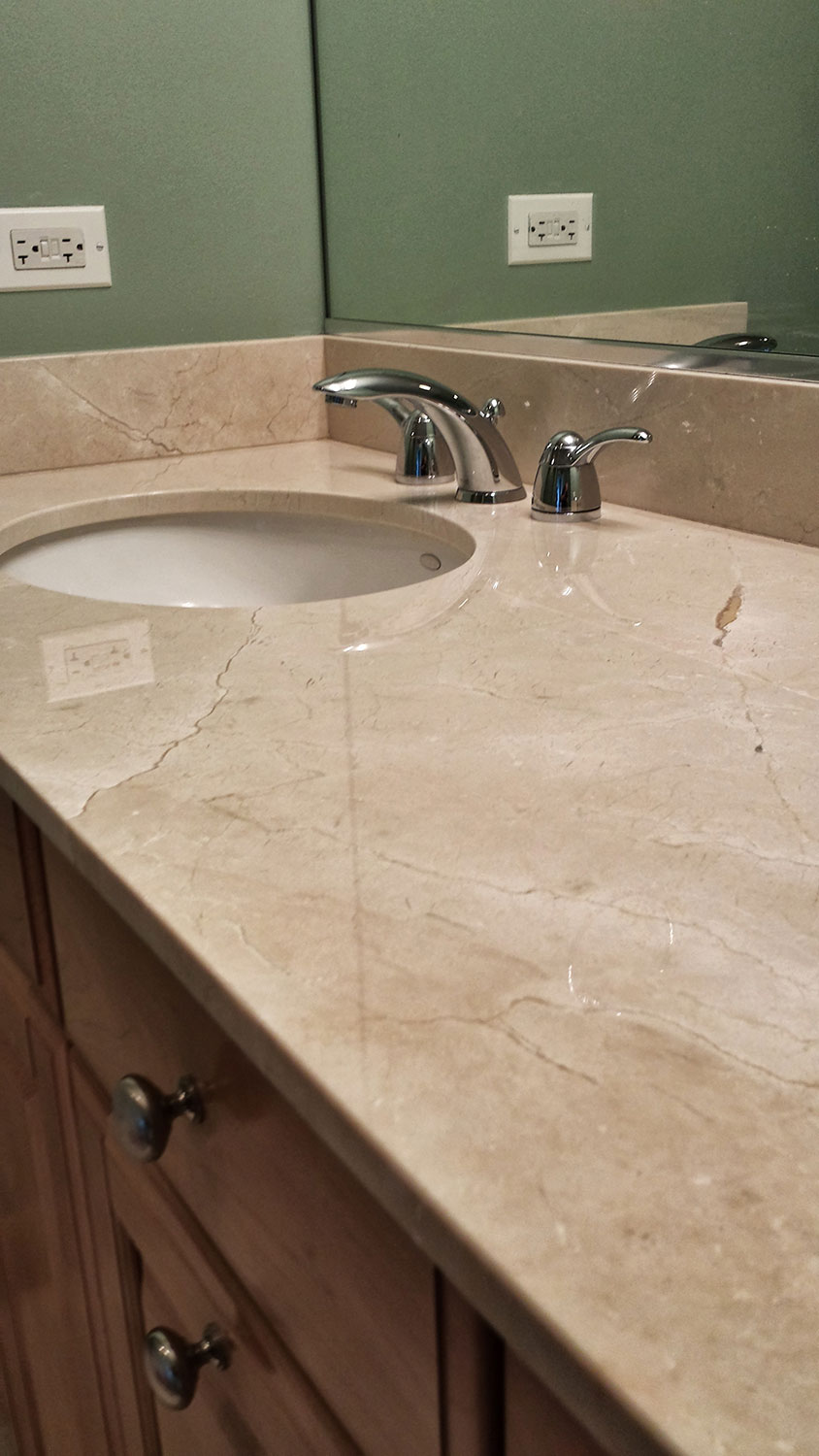
Cleaning Cultured Marble Countertops
Cleaning is the first and most crucial step in restoring cultured marble countertops. Proper cleaning removes dirt, grime, and stains, preparing the surface for further restoration steps. The key to cleaning cultured marble is to use gentle, non-abrasive cleaners that will not damage the gel-coat finish.
Begin by wiping down the countertop with a soft, damp cloth to remove loose debris and dust. For daily cleaning, a mixture of warm water and mild dish soap is usually sufficient. Apply the soapy water to the countertop with a soft cloth or sponge, gently scrubbing in a circular motion. Avoid using abrasive pads or brushes, as these can scratch the surface.
For more stubborn stains, a solution of equal parts water and white vinegar can be effective. Apply the solution to the stained area and let it sit for a few minutes before wiping it away with a damp cloth. Be cautious with vinegar, as prolonged exposure can damage the gel-coat. Always rinse the area thoroughly with water and dry it with a soft towel.
If stains persist, consider using a specialized cultured marble cleaner. These products are formulated to safely remove tough stains without harming the surface. Follow the manufacturer’s instructions for use, and always test the cleaner on a small, inconspicuous area first to ensure it does not cause any damage or discoloration.
Once the countertop is clean, it’s important to dry it completely to prevent water spots and streaks. Use a soft, lint-free towel to buff the surface, restoring its shine. Regular cleaning and drying will help maintain the appearance and longevity of cultured marble countertops.

Repairing Scratches and Damage
Over time, cultured marble countertops can develop scratches, chips, and other forms of damage. Addressing these issues promptly is essential to prevent further deterioration and restore the countertop’s smooth, glossy finish. Repairing cultured marble typically involves filling in scratches and chips, sanding the surface, and polishing it to a high shine.
For minor scratches, start by cleaning the area thoroughly to remove any dirt or debris. Next, use a fine-grit sandpaper (such as 1000-grit) to gently sand the scratched area. Sand in a circular motion, applying light pressure to avoid creating additional scratches. After sanding, wipe away any dust with a damp cloth.
For deeper scratches or chips, a cultured marble repair kit can be used. These kits typically include a resin-based filler and a hardening agent. Mix the filler according to the manufacturer’s instructions and apply it to the damaged area using a small spatula or putty knife. Smooth the filler so that it is level with the surrounding surface, and allow it to cure for the recommended amount of time.
Once the filler has hardened, sand the repaired area with fine-grit sandpaper to blend it with the rest of the countertop. Gradually progress to higher grits (such as 1500-grit and 2000-grit) for a smoother finish. Be sure to sand in a circular motion and check your progress frequently to avoid over-sanding.
After sanding, the countertop will need to be polished to restore its shine. Use a cultured marble polishing compound and a soft cloth or buffer pad to buff the surface. Apply the compound in small amounts and work it into the surface using circular motions. Buff until the countertop achieves the desired level of gloss.
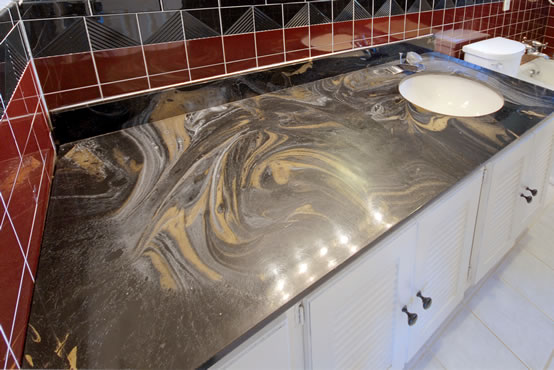
Polishing and Sealing
Polishing and sealing are crucial steps in the restoration process that enhance the appearance and durability of cultured marble countertops. Polishing removes fine scratches and restores the countertop’s glossy finish, while sealing protects the surface from stains, moisture, and damage.
To begin polishing, select a high-quality cultured marble polish. Apply a small amount of polish to a soft cloth or buffer pad and work it into the surface using circular motions. It’s important to apply even pressure and cover the entire countertop to achieve a uniform shine. Depending on the condition of the countertop, multiple applications of polish may be necessary.
Once polishing is complete, the countertop should be sealed to protect the surface and maintain its luster. Sealing cultured marble involves applying a sealant designed specifically for non-porous surfaces. Follow the manufacturer’s instructions for application, which typically include applying the sealant with a soft cloth, allowing it to penetrate the surface, and then wiping away any excess.
Sealing should be done periodically to maintain the protection it provides. Depending on the level of use and wear, sealing may be required every six months to a year. Regular sealing helps prevent stains and makes cleaning easier, ensuring the countertop remains in excellent condition.
In addition to polishing and sealing, it’s important to adopt proper maintenance practices to prolong the life of cultured marble countertops. This includes using cutting boards and trivets to protect the surface from scratches and heat, as well as avoiding harsh chemicals and abrasive cleaners that can damage the gel-coat finish.
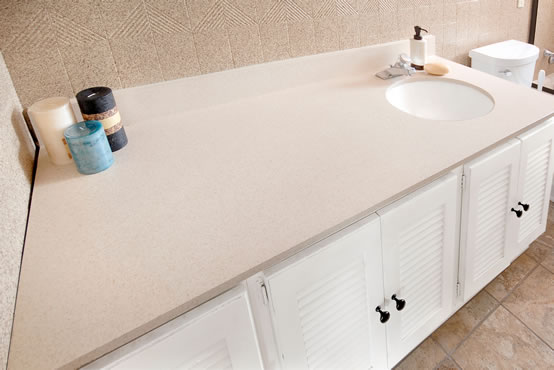
Preventative Maintenance Tips
Preventative maintenance is key to preserving the beauty and functionality of cultured marble countertops. By following a few simple guidelines, homeowners can protect their countertops from damage and ensure they remain in pristine condition for years to come.
Firstly, always use cutting boards when preparing food to prevent scratches and knife marks on the countertop. Even though cultured marble is durable, it is not scratch-proof. Similarly, avoid placing hot pots and pans directly on the surface. Use trivets or heat-resistant mats to protect the countertop from thermal shock and potential discoloration.
Secondly, clean up spills promptly to prevent staining. Although cultured marble is non-porous and resistant to most stains, certain substances like hair dye, makeup, and harsh chemicals can cause discoloration if left on the surface for extended periods. Wipe up spills with a damp cloth and mild soap as soon as they occur.
Thirdly, avoid using abrasive cleaners or scrubbing pads. These can scratch and dull the gel-coat finish, making the countertop more susceptible to damage. Stick to gentle, non-abrasive cleaners and soft cloths for routine cleaning. For tougher stains, use products specifically designed for cultured marble.
Fourthly, protect the countertop from heavy impacts. Dropping heavy objects on cultured marble can cause chips and cracks. Exercise caution when handling heavy items, and consider adding protective mats or pads in high-traffic areas to cushion any accidental drops.
Lastly, maintain a regular cleaning and maintenance schedule. Regularly dust and wipe down the countertop to keep it free of dirt and debris. Periodically polish and seal the surface to maintain its shine and protective barrier. By staying proactive with maintenance, homeowners can avoid costly repairs and extend the life of their cultured marble countertops.
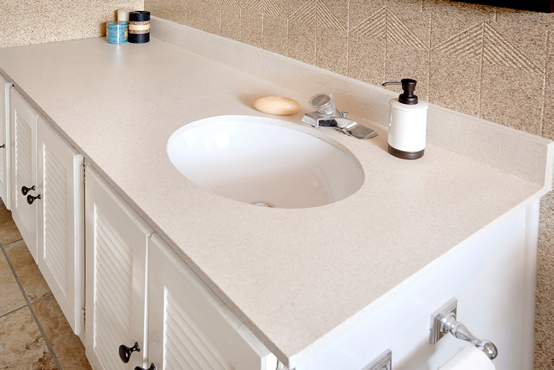
Common Mistakes to Avoid
Using Abrasive Cleaners: One of the most common mistakes is using abrasive cleaners or scrubbing pads on cultured marble. These can scratch the gel-coat finish, dulling the surface and making it more susceptible to damage. Always use non-abrasive cleaners and soft cloths for cleaning.
Ignoring Spills: Allowing spills to sit on the countertop can lead to staining and discoloration, especially with substances like hair dye, makeup, and harsh chemicals. Clean up spills promptly to prevent permanent damage.
Skipping Regular Maintenance: Neglecting regular cleaning, polishing, and sealing can result in a dull, damaged countertop. Adopting a consistent maintenance routine is essential to preserving the appearance and longevity of cultured marble.
Using the Countertop as a Cutting Board: Cutting directly on the countertop can cause scratches and knife marks. Always use a cutting board to protect the surface.
Exposing the Countertop to Extreme Heat: Placing hot pots and pans directly on the cultured marble can cause thermal shock and discoloration. Use trivets or heat-resistant mats to prevent heat damage.
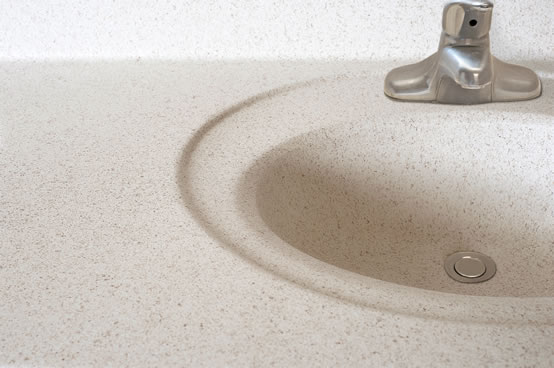 How do I remove scratches from cultured marble countertops?
How do I remove scratches from cultured marble countertops?
To remove scratches from cultured marble countertops, start by cleaning the area thoroughly. Use fine-grit sandpaper (such as 1000-grit) to gently sand the scratched area in a circular motion. For deeper scratches, a cultured marble repair kit can be used to fill the scratches. After sanding, polish the area with a cultured marble polishing compound to restore the shine.
Can I use vinegar to clean cultured marble countertops?
Vinegar can be used to clean cultured marble countertops, but it should be used with caution. A solution of equal parts water and white vinegar can effectively remove stains, but prolonged exposure can damage the gel-coat finish. Always rinse the area thoroughly with water and dry it with a soft cloth after using vinegar.
How often should I seal my cultured marble countertops?
Sealing cultured marble countertops should be done periodically to maintain protection and prevent stains. Depending on the level of use and wear, sealing may be required every six months to a year. Regular sealing helps preserve the countertop’s appearance and makes cleaning easier.
What should I avoid when cleaning cultured marble countertops?
Avoid using abrasive cleaners, scrubbing pads, and harsh chemicals on cultured marble countertops. These can scratch and dull the surface, making it more susceptible to damage. Stick to gentle, non-abrasive cleaners and soft cloths for routine cleaning.
Can I restore the shine to my dull cultured marble countertop?
Yes, restoring the shine to a dull cultured marble countertop involves cleaning, polishing, and sealing. Use a cultured marble polish to buff the surface and restore its shine. Follow up with a sealant designed for non-porous surfaces to protect the countertop and maintain its luster. Regular maintenance and proper care will help keep the countertop looking its best.
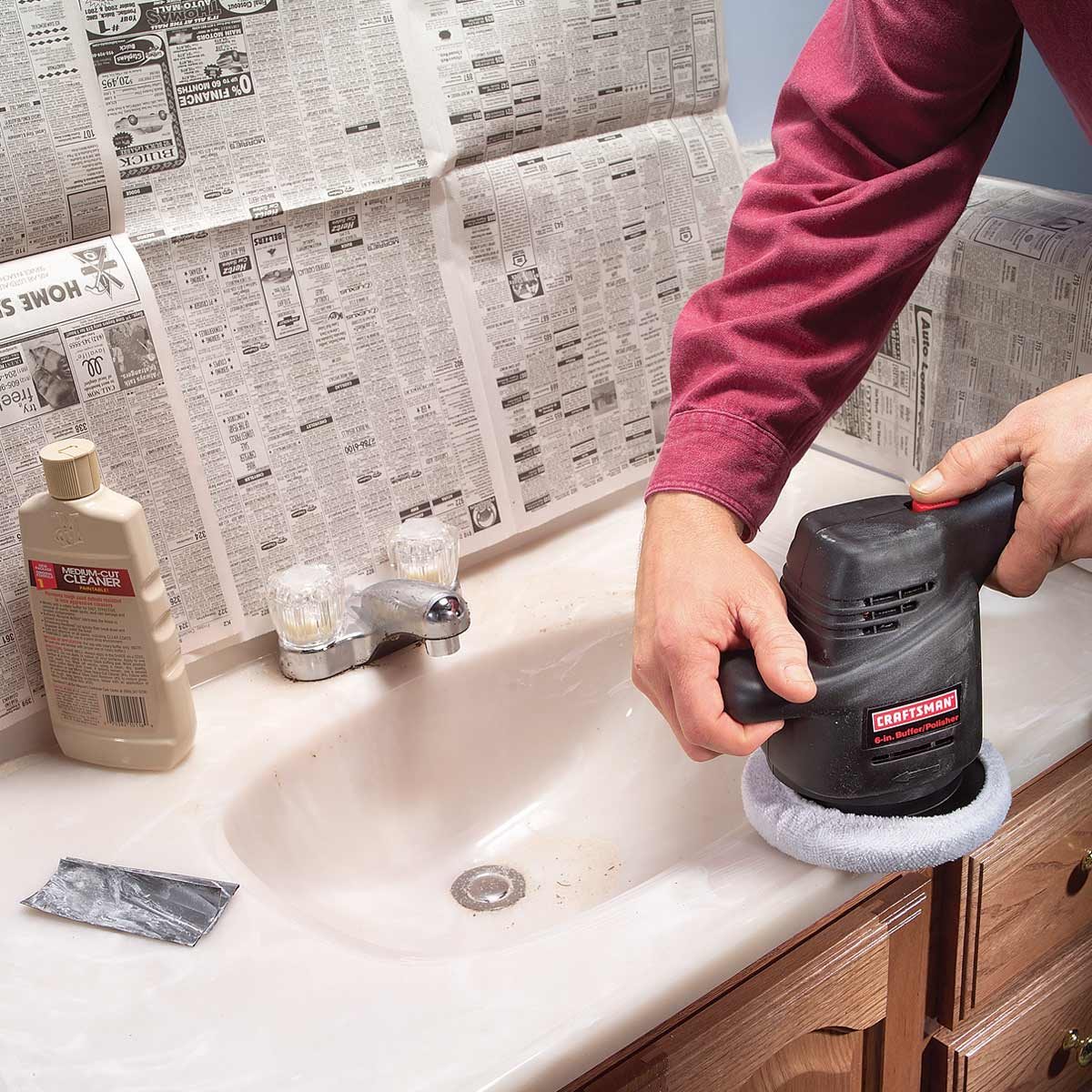
How to Paint Cultured Marble Countertops – DIY Tutorial
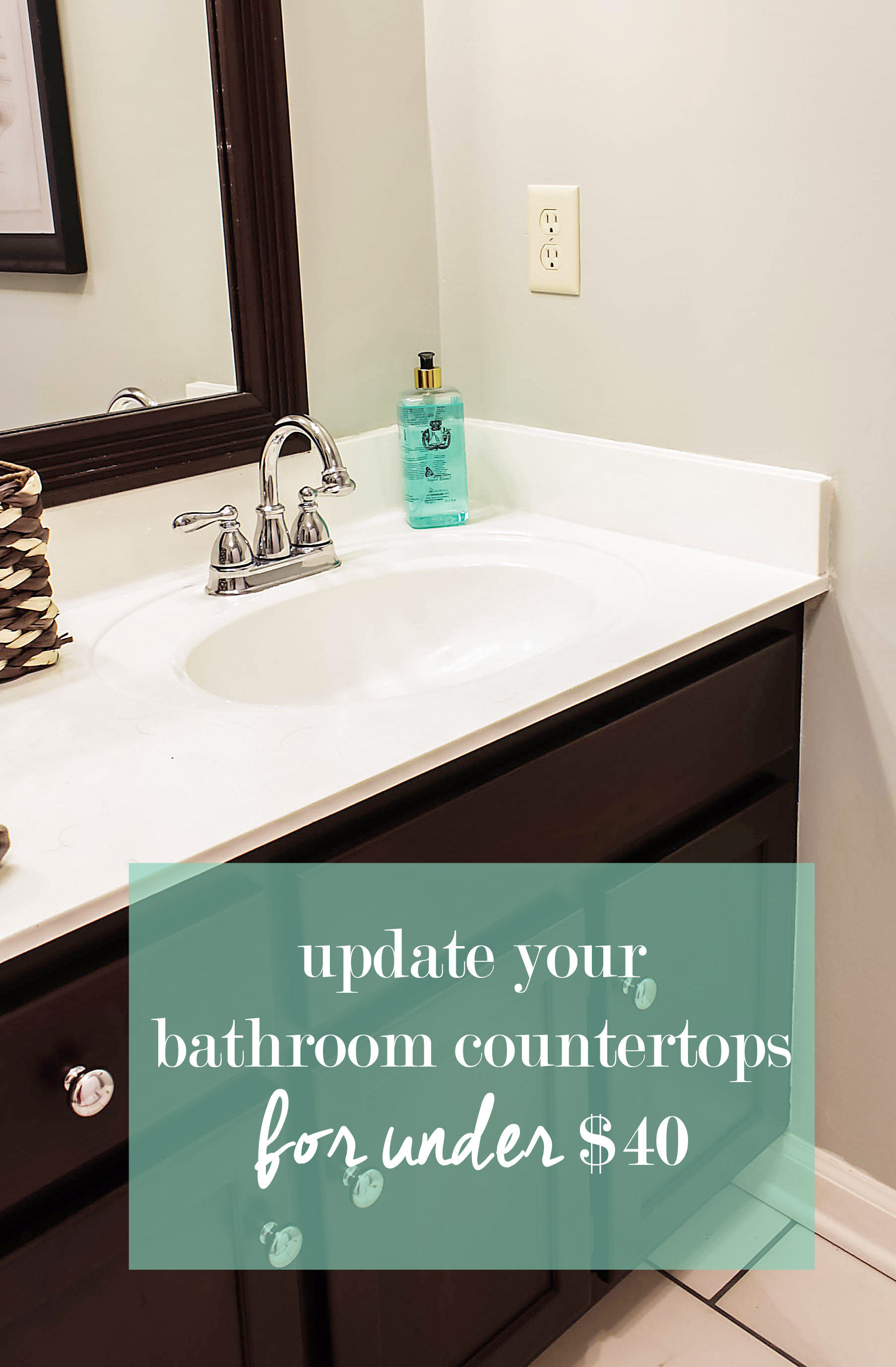
Restoring Cultured Marble Bath Vanity
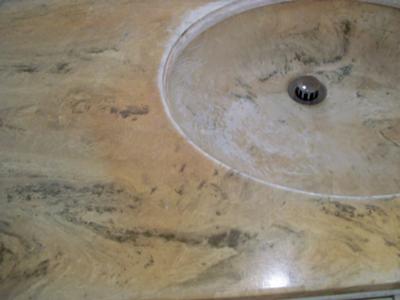
Related articles:





 How do I remove scratches from cultured marble countertops?
To remove scratches from cultured marble countertops, start by cleaning the area thoroughly. Use fine-grit sandpaper (such as 1000-grit) to gently sand the scratched area in a circular motion. For deeper scratches, a cultured marble repair kit can be used to fill the scratches. After sanding, polish the area with a cultured marble polishing compound to restore the shine.
Can I use vinegar to clean cultured marble countertops?
Vinegar can be used to clean cultured marble countertops, but it should be used with caution. A solution of equal parts water and white vinegar can effectively remove stains, but prolonged exposure can damage the gel-coat finish. Always rinse the area thoroughly with water and dry it with a soft cloth after using vinegar.
How often should I seal my cultured marble countertops?
Sealing cultured marble countertops should be done periodically to maintain protection and prevent stains. Depending on the level of use and wear, sealing may be required every six months to a year. Regular sealing helps preserve the countertop’s appearance and makes cleaning easier.
What should I avoid when cleaning cultured marble countertops?
Avoid using abrasive cleaners, scrubbing pads, and harsh chemicals on cultured marble countertops. These can scratch and dull the surface, making it more susceptible to damage. Stick to gentle, non-abrasive cleaners and soft cloths for routine cleaning.
Can I restore the shine to my dull cultured marble countertop?
Yes, restoring the shine to a dull cultured marble countertop involves cleaning, polishing, and sealing. Use a cultured marble polish to buff the surface and restore its shine. Follow up with a sealant designed for non-porous surfaces to protect the countertop and maintain its luster. Regular maintenance and proper care will help keep the countertop looking its best.
How do I remove scratches from cultured marble countertops?
To remove scratches from cultured marble countertops, start by cleaning the area thoroughly. Use fine-grit sandpaper (such as 1000-grit) to gently sand the scratched area in a circular motion. For deeper scratches, a cultured marble repair kit can be used to fill the scratches. After sanding, polish the area with a cultured marble polishing compound to restore the shine.
Can I use vinegar to clean cultured marble countertops?
Vinegar can be used to clean cultured marble countertops, but it should be used with caution. A solution of equal parts water and white vinegar can effectively remove stains, but prolonged exposure can damage the gel-coat finish. Always rinse the area thoroughly with water and dry it with a soft cloth after using vinegar.
How often should I seal my cultured marble countertops?
Sealing cultured marble countertops should be done periodically to maintain protection and prevent stains. Depending on the level of use and wear, sealing may be required every six months to a year. Regular sealing helps preserve the countertop’s appearance and makes cleaning easier.
What should I avoid when cleaning cultured marble countertops?
Avoid using abrasive cleaners, scrubbing pads, and harsh chemicals on cultured marble countertops. These can scratch and dull the surface, making it more susceptible to damage. Stick to gentle, non-abrasive cleaners and soft cloths for routine cleaning.
Can I restore the shine to my dull cultured marble countertop?
Yes, restoring the shine to a dull cultured marble countertop involves cleaning, polishing, and sealing. Use a cultured marble polish to buff the surface and restore its shine. Follow up with a sealant designed for non-porous surfaces to protect the countertop and maintain its luster. Regular maintenance and proper care will help keep the countertop looking its best.


 Related articles:
Related articles: